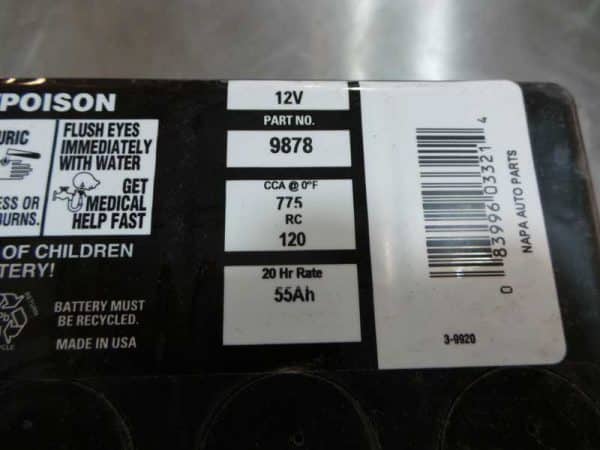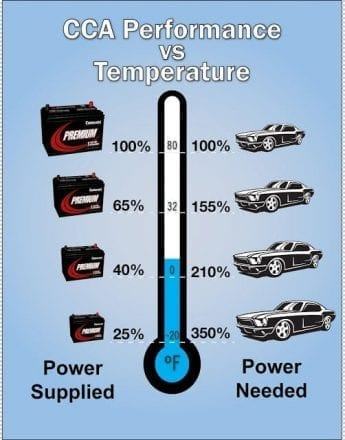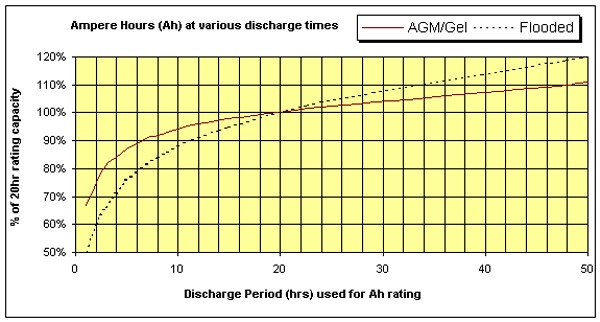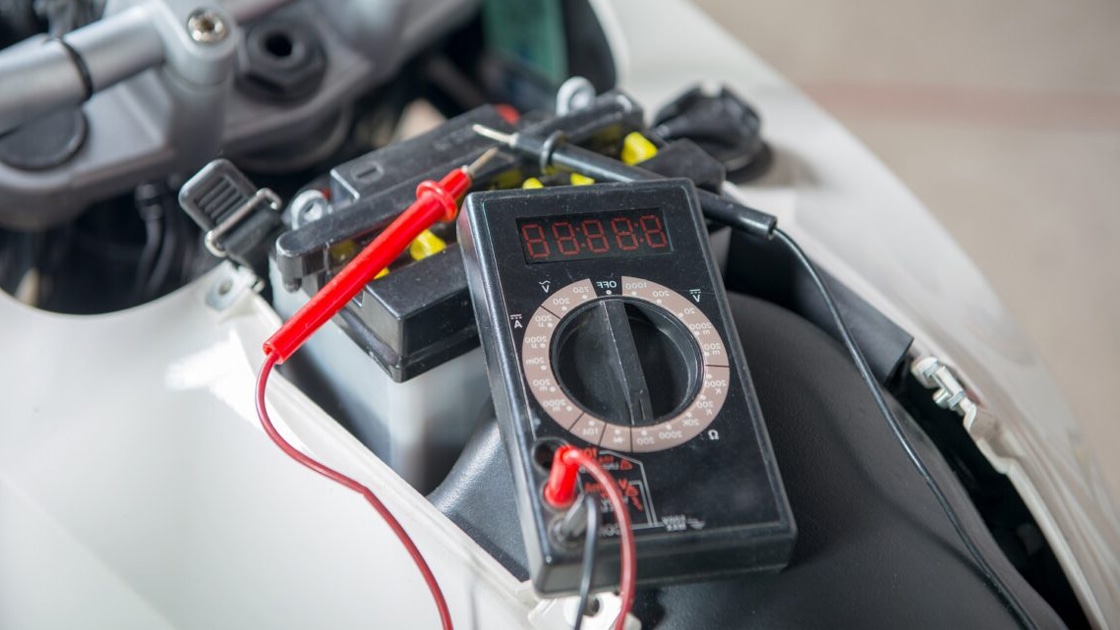To many people, the only knowledge they’re aware of their battery stops at its capacity of 12 volts. Just that, nothing more, nothing less.
And you too, let’s just be honest. When typing How many amps is a car battery in the Google search box, do you have the slightest idea of what amperes are?
Even though they’re directly linked to that 12-volt capacity, amperes are still a vain concept to most hybrid car users.
If you want the automobile’s engine to start, how many amps can a car battery produce at optimum?
And should you revitalize the battery, how long will it take at how many amps to charge it fully?
How many correct answers do you get? Less than one? Then now is the right time to get familiar with the most crucial indicators of the amps on a car battery and how to measure them. Too complicated? Fear not, this article on how many amps a car battery will break them down for you!

The Important Determinants of Car Battery Amps: CCA and Amps Hours
What do Ampere Ratings determine, How many amps are in a car battery?
The Ampere (amp), named after the father of electrodynamics André-Marie Ampère, is an SI (metric system) base unit of measurement for electric current. As abstract as this analogy may go, it’s quite fundamental to have a grasp of what it measures.
Supposing that inside the wires are flows of electricity (or should we say currents), then the Amps will be in charge of gauging how fast they’re running through internally.
On the receiving end of the wires is a battery acting as a fully-loaded container pumping electricity into the charged devices – cars in this case. Hence, ampere ratings on a battery indicate how much electricity it can hold before delivering it to the cars.
A car battery could pack a pile of intricate specifications from Voltage, Reserve Capacity (RC), Pulse Hot Cranking Amps (PHCA), or Marine Cranking Amps (MCA). Yet in order to check how many amps are on a car battery, we should round up to three indicators only: CA (Cranking Ampere), CCA (Cold Cranking Ampere), and the car battery’s capacity.
CA (Cranking Ampere)
To start your car engine, the battery will pump out current at 12 voltage at 32 degrees Fahrenheit in normal weather for half a minute. This is also the standard power required to activate a car engine, and it will be measured by CA (Cranking Ampere) rating.

The Importance of The Cold Cranking Amps (CCA) Rating to A Car Battery Performance
CCA (Cold Cranking Ampere)
How much power does your car take to start the engine while being snowed under at -4 degrees Fahrenheit via the same time and voltage conditions as those of normal weather?
To answer this question, we would need to read the CCA (Cold Cranking Ampere) rating instead of the ordinary CA index. Amidst the bitterly frozen temperatures, a high CCA rating indicates the strong starting power a car battery can release.
When you start a car, not only should the battery send power to the engine, but it also needs to pump electricity across all the inner parts, going from the vehicle CPU and extending to the dashboard gadget.
Conventionally, a typical sedan runs on a 400 CCA rating, an SUV operates on an 800 CCA rating, and a pickup hybrid truck starts on a 1,500 CCA rating.

Use A Multimeter To Measure Car Battery Amps Hours
Capacity
The normal range of a car’s capacity varies from 50 to 100Ah (Amps Hours), and hence its battery can supply around 50 – 100 amperes for 20 hours before the voltage falls flat (below 10.5 – 10.8 volts in general).
To rephrase it, a car battery’s capacity indicates the total amount of electricity the engine can draw per hour before it runs out of energy.
A battery rated with 50Ah capacity, for instance, is capable of producing 50A of electrical current for 1 hour, 25A for 2h, or 100A for 30 minutes (to get a clearer picture, check out this video of Battery amp-hour, watt-hour, and C rating tutorial by Afrotechmods).
On this account, the more current we draw, the faster the battery falls flat.
In reality, there are different trends in calculating capacity among different manufacturers. While producer A may claim his battery runs on a 10-hour rate, producer B can seize a 20-hour range, and producer C would declare a 100-hour duration.
This is to say, before determining the true capacity of your car battery, take a good look at the fine print on the label and convert the indices into one universal measurement. If your battery can deliver 225Ah per 20 hours, do one simple math:

After the division, it’s safe to declare this battery generates 11.25 amps for 20 hours.
The Car Battery Amperage Hours Chat
As mentioned above, there are many ways to interpret a car battery’s capacity, 50A per hour, or 25A for 2 hours, to name but a few. The total capacity of a car battery is a product of the power you can draw multiplied by the number of hours before it fully reaches the depth of discharge (DOD).
Not every single multiplication can deliver a precise answer given that the more you load your car battery, the more the capacity decreases.
Below is a chart displaying the relationship between the change in Ah ratings over the discharge period for reference:

How A Car Battery’s Capacity Change over the Discharge Period (Credit: tuningenmedellin.blogspot.com)
The chart implies the exact Ah rating trends over the discharge period. A 200Ah car battery’s charging system achieves 70 percent of the capacity at a 20-hour rate, or to take it differently, 35 Amps. The equation of the 70-percent flooded battery line is determined by the intersection value along its route with the 4-hour point pinned down the horizontal axle.
In short, the amp chart estimates the closest values of the amps that your battery contains at a given point in time, as long as you’re fully aware of the class battery.
Related:
- Peak Amps Vs Cranking Amps Vs Cold Cranking Amps Jump Starters
- How To Use A Jump Starter: Detailed Guideline For The Unprofessional
- Big Question Of The Day: How Many Amps To Jumpstart A Truck?
- A Detailed Guide On How To Test Batteries With A Multimeter
FAQs
1. How many amps are in a 12-volt car battery by and large?
Typically, a 12v battery delivers 48Ah. In other words, we can draw 48 amps for 10, 20, or 100 hours before the voltage falls down to 10 volts (the discharge range).
2. What amps should a car battery have on a normal basis?
On the current market, you’ll find most car batteries running on a total capacity of 550 to 1000 amperes (cranking amps), depending on the chemistry going around its inner components, such as lead-acid, absorbent glass mat (AGM), or sealed lead-acid batteries (SLA).
3. How many amps does my car battery take to start the engine?
When you determine the amps to start a car engine on each battery cell, there are a number of factors to consult: weather conditions and temperatures, the model of the automobile, voltage ratings, and the engine’s measurements.
To spark the engine, averagely speaking, your car requires 300 to 1000 amps. This is a decent benchmark working for small automobiles like compact cars or city cars.
4. How to test your car battery amps with a multimeter regardless of its size?
First thing first, you need to adjust the meter. If the lead bundled reads 0 ohms (or 1 ohm when separated), it’s acceptable. Next, look up the owner’s manual of the battery and the multimeter to check for the compliance level between their amperage ratings.
Once you’re certain that the meter is working properly, it’s time to set the correct function to measure the amperage of your car battery on the meter.
On the direct current (DC) amperage function, dial 100mA or more. This will be the pre-set battery capacity.
For a re-investigation by the multi-meter, plug the meter probes into the terminals of your battery. Afterward, the display should give out around 98.3 to indicate a 100mA capacity. If the meter shows no value when it’s connected to your device, reduce its range.
5. How long does a car battery need to be fully charged at 2 amps in general?
Dominant battery chargers on the market nowadays deliver 2 amps per hour of electrical current to your battery. Going down this route, a car battery takes 24 hours to be fully charged at 48 amperes.
There are other variants of battery chargers as well, one with a 10-amp-per-hour rate, but they’re not recommended for battery life unless you need to finish the charging process in a hurry.
Bottom Line
When you search the topic of how many amps is a car battery on the Internet, the different case studies and numeric examples can distract your original intentions. At the end of the day, despite a trap of countless misleading information, it’s our ultimate goal to find out what amps represent and how to measure them on our own.
If you need to estimate the car battery amps to figure out how long you need to charge it or what range of battery amp ratings you should buy new, then look at the amps hours, CA, and CCA indicators.
Should you want a quick rule of thumb, the normal capacity of car batteries will vary from 550 to 1000 amps, relating subject to the specifications internally. And do not forget, the bigger the vehicle batteries are, the higher this range is.
Once you’ve made sense of how many amps are within a car battery or how to take measurements of other critical indices such as the voltages or the battery sizes, the next step is learning to take advantage of them.
Be reminiscent of which index benefits you as well as your car the most and master the reading of it. Gradually, all these electronic concepts will no longer be a hard nut to crack for you anymore!
WHAT'S NEW
The best AGM battery chargers will be the ideal option to revive your flat battery without relying on professional help. These handy high-tech chargers are extremely beneficial because they offer...
The Genius Boost GB40 is popular because of its ability to help boost your vehicle when it has battery issues. Many of our customers wonder why the Noco GB40 can work greatly like so. So, we have...

